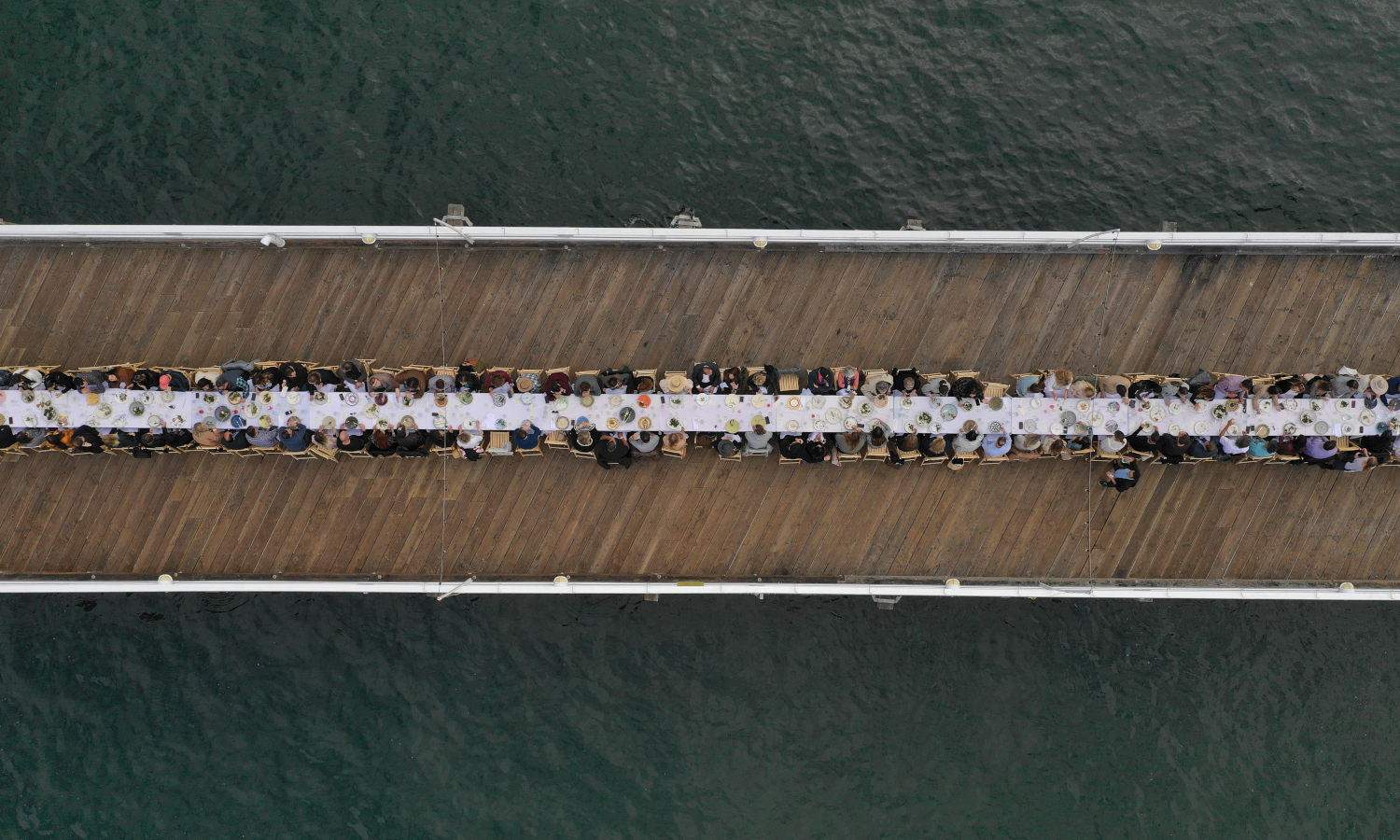A recent feature-length documentary, “Man In The Field: The Life and Art of Jim Denevan,” provides an intimate portrait of Jim Denevan, an American multimedia artist, chef, and farm-to-table pioneer.
Directed by award-winning filmmaker and photographer Patrick Trefz, the film intertwines Denevan’s personal struggles and turbulent family dynamic with his artistic and culinary journey. The film shows how Denevan approaches the natural world in several ways, creating a body of work that is engaged with and inseparable from the land and the local conditions. As an artist, Denevan’s work conjures the tradition of North American land art. He uses the earth as his canvas, creating massive, temporary geometric formations in sand, ice, and soil.
Denevan’s connection to the natural world extends beyond his artistic practice to the culinary world. In 1999, he founded Outstanding in the Field as an alternative to the conventional dining experience. The pop-up restaurants take place on organic and sustainable farms, vineyards, and gardens around the world. Denevan uses fresh, locally-sourced meals—which serve anywhere from 100 to 1,000 guests—to reconnect diners to the land and to the farmers who feed them.
Through interviews with the artists, chefs, and farmers Denevan collaborates with, the film works to underscore Denevan’s mission to connect people and their food. Ultimately, the film conveys Denevan’s efforts to cultivate community between local farmers, chefs, and diners. To Denevan and Trefz, who met in 2003 in Santa Cruz, California, the ability to feel connected to “the earth and the broader universe” is central to their creative pursuits, Trefz tells Food Tank.
The film also shows that Denevan takes the same approach to each event as he does to his art. Trefz presents viewers with swooping, bird’s-eye-view shots of long dinner tables that stretch across pristine Bermudan beaches, Argentinian vineyards, verdant American farms, and urban rooftop gardens. In doing so, he illustrates that Outstanding in the Field dinners are staged intentionally to reflect nature, with tables arranged in a straight line along a pier, in a crescent-shape in a grassy field, or in a looping circle on a beach.
In the film, William Fox, Museum Director for the Center for Art and Environment, says that Denevan is “making a very intuitive gesture that has to do with the farming situation and his ability to make structure in the landscape.”
Trefz began filming “Man in the Field” in 2013. The most challenging part of filming, Trefz tells Food Tank, was being able to understand and depict Denevan’s psychology and the personal experiences that shaped his work.
Denevan grew up in a family of nine and, at a young age, lost his father to a brain tumor. As he learned to navigate the challenges of mental illness in his family, he found respite in nature and in the act of drawing geometric patterns into the sand on secluded California beaches. Denevan later found the same sense of tranquility and keen attention to detail as a young cook in a local restaurant.
As Trefz documented Denevan’s approach to merging his land-based art with his traveling culinary feast, Outstanding in the Field, Trefz asked himself, “How can someone pull this off?”
“It was an enormous feat just to do one dinner,” Trefz tells Food Tank. In its 22-year history, Outstanding in the Field has reached all 50 U.S. states and 16 countries around the world.
Denevan’s ephemeral land art and locally-sourced outdoor dinners may be temporary interventions. But the film leaves viewers with an understanding of the need for long-lasting collaboration with each other and with the environment.
Trefz tells Food Tank that he hopes the film will serve as a “great message for people to go back to the land, be in touch with organic farming, and get creative themselves.”
Photo courtesy of Brighton Denevan











